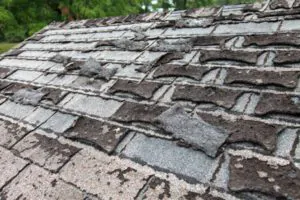
The winter has come in Massachusetts. It’s the season to enjoy hot cocoa while admiring the picturesque outdoor landscapes by the warm furnace while listening to Christmas Songs. Yes, it’s that time of the year. That being said, it’s also the time when winter storms test the reliability of your roof.
Winter storms cause ice and snow to build up on your roof. This means your roof could face damage, and you will be faced with unexpected repairs. That’s why important to take action to protect your home and avoid roof damage this winter in Massachusetts.
What are the Causes of Roof Damage in Winter?
If you’ve had any damage to your roof this winter, you might be wondering what caused it. Here’s our list of the top three causes:
Too much snow load on your roof
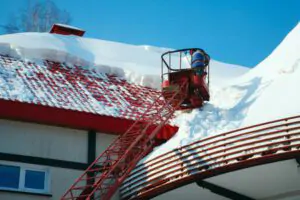
With strong winter storms and continuous snowfall, it only takes a short time for the ice and snow to build up on your roof. If not addressed, this may cause damage to your gutters and add weight to your roof, leading to structural damage.
Ice dams
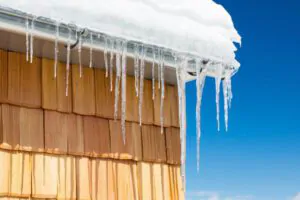
As the warm temperature rises and the heat from your home increases, the shingles on your roof also warms up. This causes the snow to melt and run through your gutters and downspouts. Then it refreezes again and creates ice dams, resulting in barriers and obstructed water flow on your roof. This causes serious damage to your roof as it can cause leaks and can potentially damage your gutter and downspout system.
Water leaks
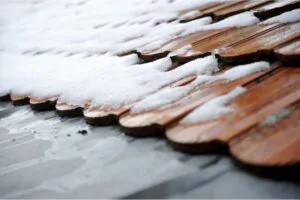
Melted snow can easily slip through small cracks in the roof structure. As snow melts, it can seep beneath your shingles and into your home’s minor crevices. In addition, it expands as it refreezes when temperatures drop and rise. This can result in wider fractures, loose shingles, and water leaks.
4 Tips to Avoid Roof Damage This Winter in Massachusetts
This winter is sure to be a difficult one for homeowners. Between ice and snow, it can be tempting to just let yourself get sucked into an endless cycle of shoveling and scraping. But that’s not the best way to make sure your roof is protected from the elements. Here are winter tips for homeowners to keep in mind as we head into the coldest months:
1. Do a Regular Roof Inspection and Maintenance
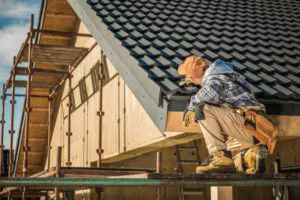
There are many things to prepare for the winter season, but we should not forget to check on our roofs.
Roof inspections and maintenance allow you to gauge the extent of damage on your roof. Yes, you can do it on your own. However, it is advisable to call a trusted roofing contractor to safely and properly assess the issues such as cracks, missing shingles, ice dams, blocked gutters, and anything else that can cause serious damage to your roof. Roofing companies can also gauge how much snow your roof can handle. They can also help you perform the necessary repairs and roofing needs before it worsens.
You should consider a professional roof inspection before the winter season start. They can help you identify the areas that need repair, replacement, or cleaning. They can also recommend to you the proper materials to be used for repair and other things to do to prevent roof damage before the harsh season.
Have You Inspected your Shingled Roof?
2. Remove Snow and Debris
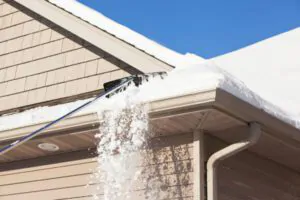
Roofing companies can also help you clean up your roof from snow and debris and improve your gutter and downspout system.
Clean up roof debris. Piled-up debris on your roof can cause serious damage to your roof. They can get lodged between cracks and shingles, which can cause leaks. Wet leaves can also lead to mold. Lastly, grown moss can add weight to your roof, which can affect your roof structure’s integrity. You can ask for professional help to clean this up and prevent moss, algae, mildew, or mold problem. They use effective products to prevent them from growing back and wipe up their invasive growth.
Clean up your gutters. The gutter and drain system around the edge of your roof gathers and directs rainwater runoff away from your roof and residence. This helps to avoid buildup, water damage, and other problems. However, the very element that makes them useful can also cause issues if you are not cautious.
Gutters blocked with snow, ice, debris, leaves, twigs, and other materials will be incapable of discharging the precipitation. This will result in standing water in your gutters and on your roof, which can cause water damage, ice dam development, and other problems. When this occurs, mildew and mold are not far off. Worse? If the ice, snow, and debris are not removed, your gutters may break away from your house.
3. Repair and Replace Roof Damages
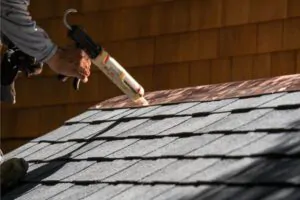
During the winter, siding and shingles are more susceptible to damage. Wind damage, snow, ice, debris, and other winter roofing elements can cause sidings and shingles to lift or fall off completely.
Furthermore, removing cracked or missing shingles keeps moisture from escaping into your attic and causing damage to the rest of your property. You may require several thousand dollars in repairs by the time you discover the indicators from inside. However, with a comprehensive autumn inspection and preventative maintenance from the roofing professional near you, you can keep your expenses low.
Related Post: How Much Does It Cost To Replace or Repair A Roof?
4. Improve House Installation and Ventilation
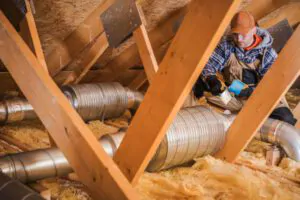
Make sure your house is properly insulated according to the International Energy Conservation Code.
Roofs are not only prone to damage from the outside but also the inside. This is due to the condensation that happens inside your home. Condensation can rot the beams and supporting pillars that keep your home sturdy. To avoid this, you should also conduct an interior inspection to avoid internal moisture. Check and repair gaps and areas with insufficient coverage. Proper insulation can keep your house warm, prevent ice dams and lower your electric bill.
In addition, you should not forget to properly ventilate your home. Ventilation allows warm and humid air to be distributed properly, protecting your insulation and reducing ice damage on your roof. Keep in mind that a well-ventilated roof is essential for distributing heat evenly throughout its surface. This keeps snow and ice from accumulating in one spot.
Frequently Ask Question
What damages roofs the most?
The most common causes of roof damage in winter include heavy snow load, ice dams, water leaks, and improper maintenance. Snow accumulation adds weight to the roof, potentially leading to structural stress, while ice dams form when snow melts and refreezes, creating blockages that trap water on the roof. This water can seep into cracks or under shingles, leading to leaks and further damage. Regular inspections and proper insulation are key to preventing these issues.
How do you prevent snow from damaging roofs?
Preventing snow damage to roofs involves regular maintenance, including removing excess snow and debris from the roof and ensuring gutters are clear to prevent water buildup. Hiring a professional for roof inspection before winter can help identify any vulnerable areas and necessary repairs. Additionally, having a well-insulated attic prevents heat loss, which reduces the chances of ice dams forming.
How can I protect my roof from storm damage?
To protect your roof from storm damage, perform regular inspections and address any loose or missing shingles or cracks. During winter, keep the roof clear of ice, snow, and debris. It’s also helpful to improve your attic’s insulation and ventilation to prevent condensation and reduce ice dams. Consider hiring a professional to assess your roof’s condition before the winter season to prevent issues caused by heavy snow and strong winds.
How to prevent ice dams on the roof in winter?
Ice dams can be prevented by properly insulating your attic and ensuring adequate ventilation. This minimizes the warm air that causes snow on the roof to melt and refreeze. Keep gutters and downspouts clear of debris to allow for proper drainage. If ice dams do form, it’s best to contact a professional to safely remove them and prevent damage to the roof structure.
What is the number one cause of roof failure?
The number one cause of roof failure is improper or inadequate maintenance. Regularly inspecting and maintaining the roof, especially before and after winter, helps detect potential issues early, such as damaged shingles, cracks, or clogged gutters. These small problems can escalate if left unaddressed, leading to leaks, ice dams, and structural damage that compromise the roof’s integrity over time.
What is the weakest part of a roof?
The weakest parts of a roof are often around seams, edges, and areas surrounding roof penetrations like chimneys, vents, and skylights. These areas are more prone to leaks, especially in winter when ice and snow can accumulate. Regular inspections and maintenance of these spots are essential to prevent water infiltration and damage.
Contact Coastal Roof Experts South Shore MA to Help You Prevent Roof Damage
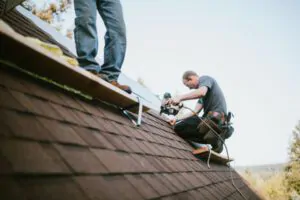
Keep your family safe and comfortable this winter. Prevent roof damage and secure your house’s integrity to withstand the harsh winter. Today, homeowners don’t need to risk their safety to clean up, inspect, and do roofing repairs in Plymouth and other cities on the South Shore.
Coastal Roof Experts South Shore MA has been in the industry for a long time and has gathered a wealth of information along the way. Sharing our expertise allows our clients to understand what is going on with their roofs and feel confident that they are in the best hands on the Shore Shore. Our open-minded approach constantly embraces client input, which helps us understand how we can improve our customer service and make your experience even better. Contact us for roof repairs.



